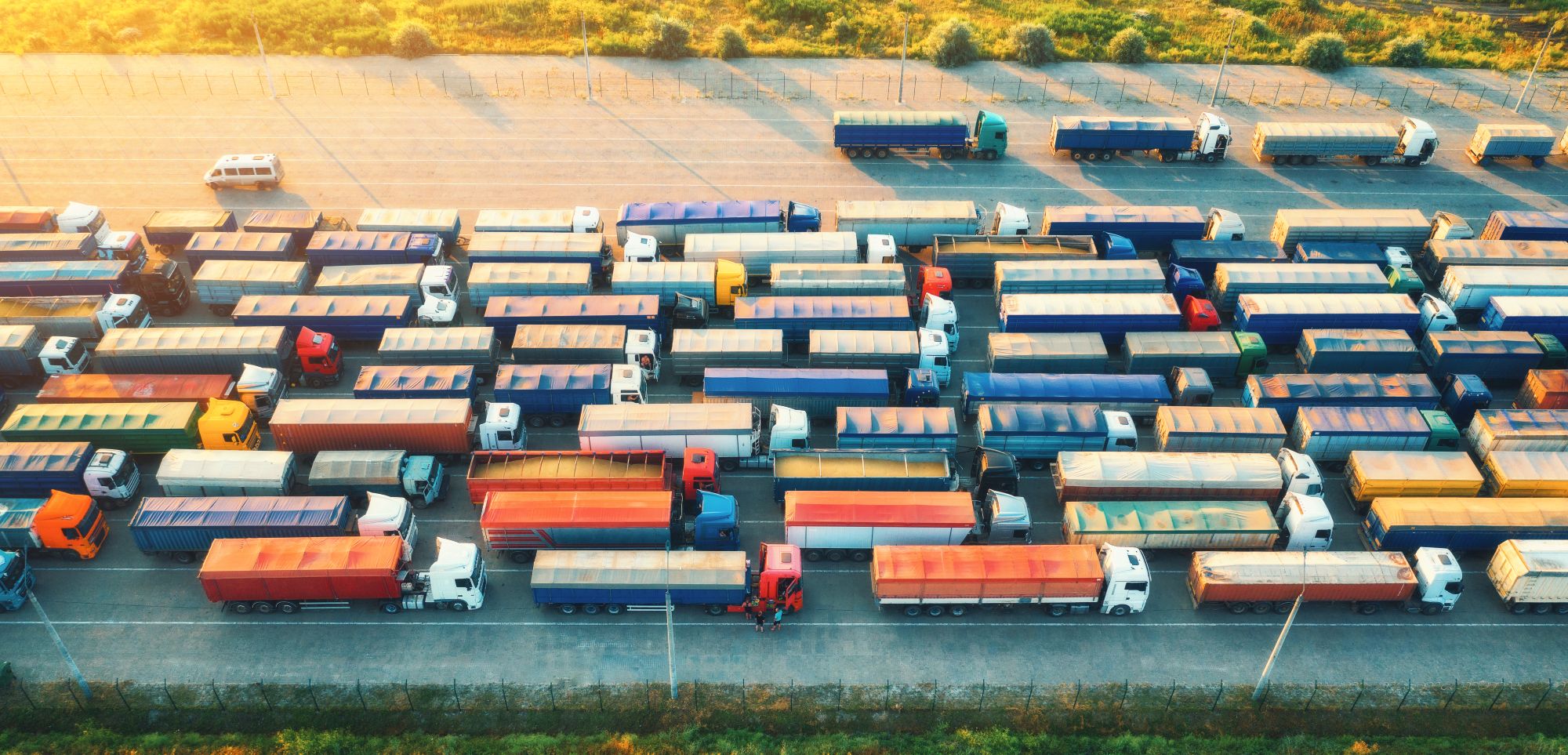
Guest
6 strategieën voor vlootbeheer die uw resultaten zullen verbeteren
Gemaakt: 16-10-2025
•
Bijgewerkt: 16-10-2025
Wagenparkbeheerders in het Verenigd Koninkrijk staan op vele fronten voor financiële uitdagingen. De stijgende operationele kosten als gevolg van de volatiele brandstofprijzen, de toenemende druk van de duurzaamheidstransformatie, de kapitaalintensieve aanschaf van voertuigen, het chronische tekort aan talent en de ongeplande en lange stilstandtijd doen pijn aan de portemonnee.
Als je al hebt geïnvesteerd in basisoplossingen om routes te optimaliseren, de prestaties van chauffeurs te verbeteren, het brandstofverbruik te minimaliseren, de gezondheid van bedrijfsmiddelen te bewaken en preventief onderhoud te plannen, maar je hebt nog geen significante winst geboekt, overweeg dan om deze zes praktische strategieën toe te passen om consistent positieve netto-inkomsten te boeken.
1. Een gedetailleerd levenscyclusplan voor de vloot opstellen
Veel wagenparkprofessionals zien bedrijfsmiddelen als onvermijdelijke geldputten en hebben zich erbij neergelegd dat ze de neiging hebben om middelen uit te putten. Deze opvatting normaliseert inefficiënt brandstofverbruik, onredelijk hoge onderhoudskosten en veelvuldige stilstand door plotselinge defecten. Minderwaardige voertuigen brengen de veiligheid van de bestuurder en de lading in gevaar, met als gevolg hogere toekomstige verzekeringstarieven en blijvende reputatieschade.
Het ontwikkelen van een gestructureerde vlootlevenscyclus en vervangingsstrategie is essentieel om bepaalde voertuigen met pensioen te sturen voordat ze de bedrijfskas beschadigen. Het helpt u om uw budget voorzichtig te beheren, zodat u weloverwogen beslissingen kunt nemen op basis van langetermijndoelen in plaats van onmiddellijke behoeften.
Geef prioriteit aan de kosten per kilometer, de leeftijd van het voertuig en het aantal kilometers. Deze belangrijke meetgegevens geven aan wanneer een bedrijfsmiddel in aanmerking komt voor buitengebruikstelling in plaats van te wachten tot het onbruikbaar wordt. Deze proactieve aanpak verlaagt uw totale eigendomskosten, waardoor u activa in verval kunt doorverkopen terwijl hun waarde nog relatief hoog is. De opbrengst van de verkoop kan de prijs compenseren van de aanschaf en integratie van voertuigen met gedeeltelijke automatiseringsmogelijkheden in uw wagenpark.
2. Rekrutering uitbreiden
Het chronische tekort aan arbeidskrachten in de logistieke sector drijft de kosten van vlootbeheer op door stijgende lonen, langere reparatietijden van voertuigen en verliezen als gevolg van vertragingen en gemiste deadlines. Dit probleem bestond al voor de pandemie en Brexit heeft het alleen maar erger gemaakt. UK in a Changing Europe en het Centre for European Reform schatten dat het VK in 2023 een tekort van 330.000 werknemers zal hebben na het einde van het vrije verkeer.
De sleutel is om het bewustzijn van logistiek als een opwindende carrière aan de basis te vergroten. Wagenparkbeheerders zouden meer kunnen doen om leerlingen in het basis- en voortgezet onderwijs kennis te laten maken met de sector. Uitleggen wat vrachtwagenchauffeurs en monteurs doen en wat hun bijdrage aan de maatschappij is, kan deze beroepen meer aanzien geven. Leerlingwezenprogramma's kunnen wonderen doen, want uit de enquête van 2022/2023 Logistics UK bleek dat 68% van de mensen die geïnteresseerd zijn in logistiek naar deze programma's op zoek zijn.
3. Verminder knelpunten in faciliteiten
Een slecht ontwerp van de werkplek is een onderschat dilemma bij vlootbeheer. Vertragingen in het orderverwerkingsproces kunnen een domino-effect veroorzaken dat uiteindelijk de operationele kosten opdrijft. Ze kunnen leiden tot meer stilstand, onderbezetting van talent, niet nagekomen leveringsschema's en ontevredenheid bij de klant. Inefficiënte workflows kunnen je dwingen om resources opnieuw toe te wijzen, chauffeurs en voertuigen te herschikken en routes te wijzigen om vertragingen te compenseren.
Facilitaire desorganisatie valt buiten het bereik van wagenparkbeheerders. Nauwe samenwerking met het magazijnbeheer is belangrijk om de logische stroom en snelheid van goederenbewegingen binnen de ruimte te verhogen. Eenvoudige verbeteringen zoals het ophangen van voldoende hoge LED-verlichting en het installeren van deuren[ die 61 centimeter per seconde openen] (https://www.cornelliron.com/rolling-door-blog/Cornell-blog/how-high-speed-doors-increase-warehouse-productivity) kunnen fouten verminderen en de productiviteit verhogen.
Maak gebruik van technologie voor duidelijke communicatie. Door te kiezen voor een softwareoplossing die magazijn- en vlootbeheersystemen samenvoegt of helpt samenwerken, krijgen alle relevante belanghebbenden volledig inzicht in de activiteiten van elke afdeling. Het vormen van een cross-functioneel team cultiveert een cultuur van samenwerking en gedeelde verantwoordelijkheid, waardoor iedereen gezamenlijk verantwoordelijk wordt gehouden voor fouten en het aanwijzen van schuldigen wordt voorkomen.

4. Reparatieprocessen moderniseren
Een innovatieve, pragmatische benadering van voertuigonderhoud is noodzakelijk om ongeplande stilstand te verminderen. Proactieve onderhoudsbeurten en automatische onderhoudsschema's zijn essentieel voor het verlengen van de levensduur van bedrijfsmiddelen, maar het digitaliseren van inspecties en het stroomlijnen van reparaties zijn net zo belangrijk om rode vlaggen in een vroeg stadium te ontdekken, de bedrijfsmiddelen snel weer rijklaar te maken en technici te helpen efficiënt te werken.
Mobiele pre-trip inspecties zijn essentieel voor preventief onderhoud en naleving van de regelgeving. Apps leggen realtime gegevens vast, stellen chauffeurs in staat om problemen aan het management door te geven en vergemakkelijken het bijhouden van gegevens voor beoordeling, analyse en rapportage. Met digitale werkorders kunt u reparaties in uw hele wagenpark in de gaten houden en ervoor zorgen dat deze geen invloed hebben op de leveringsschema's.
Upgrade apparatuur maakt het leven van uw technici gemakkelijker en vormt een aanvulling op initiatieven om bij het toewijzen van taken in te spelen op hun sterke punten. De nieuwste diagnoseapparatuur kan een aanzienlijke uitgave zijn, maar ook een grote tijdsbesparing. Ze betalen zichzelf terug door voortijdige slijtage van onderdelen te verminderen, storingen te voorkomen en u te helpen onderhandelen over lagere verzekeringstarieven. Elke nieuwe technologie heeft een leercurve, dus zorg voor de juiste training om je personeel bij te scholen.
5. Bouw een netwerk van externe monteurs
Goed onderhouden wagenparken kunnen nog steeds pech krijgen door de toestand van de wegen in het Verenigd Koninkrijk. Volgens een rapport uit januari 2024 met gegevens van 7.000 gebruikers van Stan the App, waren er 1,5 miljoen kuilen op Britse wegen. Dit cijfer besloeg slechts 13% van het wegennet van het land, wat suggereert dat het werkelijke aantal defecten zou kunnen oplopen tot 11,5 miljoen.
Gebieden met kouder, natter weer hebben meer kans op kuilen in het wegdek. Lokale overheden vullen jaarlijks miljoenen kuilen, dus het kan een uitdaging zijn om van tevoren routes te plannen om ze te vermijden. De integratie van autonome functies in wagenparkvoertuigen - zoals deep learning-ondersteunde objectdetectie en adaptieve vering - zou moeten helpen, maar het in realtime vermijden van kuilen blijft een uitdaging.
Voorzichtige wagenparkbeheerders anticiperen op storingen, ongeacht hoe goed hun bedrijfsmiddelen zijn onderhouden, en richten zich op paraatheid. Ze werken met vooraf goedgekeurde lokale mobiele monteurs en onafhankelijke autoreparatiebedrijven om defecte voertuigen te repareren, stilstand te minimaliseren en de productiviteit en veiligheid van de bestuurder te bevorderen.
Keur freelance automonteurs door hun referenties te controleren, hun specialisatie te begrijpen en hun gereedschap te controleren. Vuile monteurs moeten de laatste optie zijn, dus train je chauffeurs in het oplossen van basisproblemen en rust ze uit met de juiste uitrusting.
6. Autonome voertuigen integreren in de laatste kilometers
Het overlaten van last-mile bezorging aan zelfrijdende systemen kan dit kritieke aspect van logistiek efficiënter en goedkoper maken. Bekende bedrijven als Amazon, FedEx en UPS hebben hun diepe zakken gebruikt om autonome laatste-afstandsbezorging te testen en te bewijzen dat bestuurderloze bestelwagens en drones de operationele kosten van stedelijke logistiek kunnen verlagen en de klanttevredenheid kunnen verhogen.
Succesvolle pilots met de integratie van autonome voertuigen zouden organisaties met kleinere wagenparken moeten inspireren om te innoveren. De hoge initiële investering is echter slechts een van de obstakels waarmee veel wagenparkbeheerders worden geconfronteerd. Infrastructuur, regelgeving en consumentenacceptatie zijn ook belangrijke overwegingen.
Gelukkig heeft het Britse parlement de Automated Vehicles Act 2024 aangenomen om de wettelijke basis te leggen voor autonome last-mile activiteiten. In juni 2025 deelde parlementslid Lilian Greenwood een update dat de regering nog steeds bezig was met het opstellen van richtlijnen, wat aangaf dat de beleidsmakers er niet omheen draaien om belanghebbenden te inspireren zodra de wet is geïmplementeerd.
Strategieën implementeren om de beschikbaarheid van uw vloot te maximaliseren
Het herzien van uw wagenparkactiviteiten is cruciaal voor het verbeteren van uw bedrijfsresultaten, maar elke verandering brengt kansen en risico's met zich mee. Managers kunnen verschillende strategieën uitproberen, van gedetailleerde levenscyclusplannen tot autonome voertuigintegratie. Met een vooruitziende blik, innovatie, creativiteit, samenwerking, pragmatisme en vindingrijkheid kunt u dringende pijnpunten oplossen en nieuwe uitdagingen overwinnen om winst te maken.




